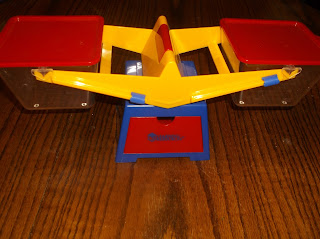Last year when I was planning our coursework for this year I came across this awesome book.
And I knew that's what I wanted to use to teach my kids anatomy this year. It has lots of fun, hands-on models and examples, and we have had fun using them.
We've also used a few ideas from this book. But I think some of their models are more complex than they need to be.
I bought a skeleton shower curtain and we named him Mr. Bones and hung him up in our homeschooling room. We have enjoyed adding his organs, veins, and arteries.
I have loved seeing my kids learn about themselves and their bodies. And I have loved hearing the things they say. Perhaps Abby, finishing up kindergarten, has had the best quotes here. Recently Grace scraped her leg and Cameron was applying a bandage. "Look, Grace! Platelets!" Abby squealed.
Another day Abby was explaining why she had to go to the bathroom when she was supposed to be helping to clean the kitchen (and hadn't needed to go any earlier). "My kidneys weren't done putting it all in before," she protested.
Grace hasn't perfectly mastered all of her letters. But she does know that red blood cells carry oxygen all over her body.
Jake's favorite parts have probably been the models and experiments that involved food. One exception might be when we made a model tongue complete with labeled taste buds so the kids could learn which parts of their tongues identify tastes that are sweet, salty, sour, and bitter. For the bitter test I gave them each a tiny taste of baking cocoa. Jake went to wash his mouth out in the sink afterwards.
You can click here for my lesson plans. Happy homeschooling!











